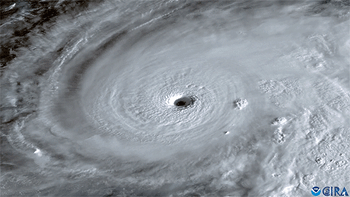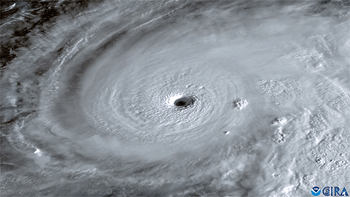
Hurricane Melissa made landfall in eastern Cuba near the city of Chivirico early Wednesday as a Category 3 storm after pummeling Jamaica as one of the strongest Atlantic hurricanes on record, the U.S. National Hurricane Center said.
Hundreds of thousands of people had been evacuated to shelters in Cuba. A hurricane warning was in effect for the provinces of Granma, Santiago de Cuba, Guantanamo, Holguin and Las Tunas.
Early Wednesday, Melissa had top sustained winds of 115 mph (185 kph) and was moving northeast at 12 mph (19 kph) according to the National Hurricane Center in Miami. The hurricane was about 60 miles (95 kilometers) west of Guantánamo, Cuba and 230 miles (370 kilometers) south of the Central Bahamas.
Melissa was forecast to cross the island through the morning and move into the Bahamas later Wednesday. The continuing intense rain could cause life-threatening flooding with numerous landslides, U.S. forecasters said. A hurricane watch was in effect for Bermuda.
Melissa struck Jamaica on Tuesday with top sustained winds of 185 mph (295 kph).
The storm was expected to generate a storm surge of up to 12 feet (3.6 meters) in the region and drop up to 20 inches (51 centimeters) of rain in parts of eastern Cuba.
“Numerous landslides are likely in those areas,” said Michael Brennan, director of the U.S. National Hurricane Center in Miami.
The hurricane could worsen Cuba’s severe economic crisis, which already has led to prolonged power blackouts, fuel shortages and food shortages.
“There will be a lot of work to do. We know there will be a lot of damage,” Díaz-Canel said in a televised address, in which he assured that “no one is left behind and no resources are spared to protect the lives of the population.”
At the same time, he urged the population not to underestimate the power of Melissa, “the strongest ever to hit national territory.”
Provinces from Guantánamo — in the far east — to Camagüey, almost in the center of elongated Cuba, had already suspended classes on Monday.
As Cuba prepared for the storm, officials in Jamaica prepared to fan out Wednesday to assess the damage.
Extensive damage was reported in parts of Clarendon in southern Jamaica and in the southwestern parish of St. Elizabeth, which was “under water,” said Desmond McKenzie, deputy chairman of Jamaica’s Disaster Risk Management Council.
The storm also damaged four hospitals and left one without power, forcing officials to evacuate 75 patients, McKenzie said.
More than half a million customers were without power as of late Tuesday as officials reported that most of the island experienced downed trees, power lines and extensive flooding.
The government said it hopes to reopen all of Jamaica’s airports as early as Thursday to ensure the quick distribution of emergency relief supplies.
The storm already was blamed for seven deaths in the Caribbean, including three in Jamaica, three in Haiti and one in the Dominican Republic, where another person remains missing.
The death toll from Hurricane Melissa reached seven on Tuesday as Jamaica continued to feel impacts.
Meteorologists forecast Melissa to stay a strong hurricane as it moves over Cuba and heads toward the Bahamas later Tuesday, the National Hurricane Center said.
“Over the next few days, increasing vertical wind shear, cooler waters, and a drier surrounding mid-level environment will likely induce further weakening,” the NHC said in a forecast analysis this morning.
“However, Melissa is forecast to still be a hurricane when it makes it closest approach to Bermuda later this week.”
Government officials in the Bahamas are urging people to ensure their safety amid final preparations for the storm’s arrival later today in the southeast and central parts of the country.
“This is your final opportunity to ensure your safety. If you have not already found secure shelter, please do so immediately,” said Leon Lundy, disaster risk management minister, in a press briefing last night.
According to the authorities, 1,348 residents had been safely evacuated from the southern Bahamas.
“This is the most extensive pre-event evacuation exercise undertaken by the government of The Bahamas in recent history,” said Aaron Sargent, managing director of the Bahamas Disaster Risk Management Authority.

Allison Craig is a passionate sports writer and analyst with a deep love for game strategies, player performances, and the latest trends in the sports world. With years of experience covering football, basketball, tennis, and more, she delivers insightful analysis and engaging content for sports enthusiasts.


No responses yet